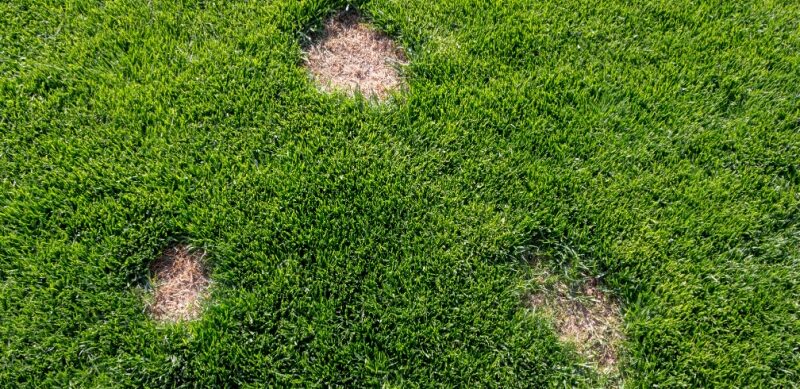Prevent Brown Spots from Developing on Your Fresno Home’s Lawn

Brown spots on your lawn can be a frustrating sight, especially when you're aiming for a lush, green expanse. These unsightly patches can be caused by various factors, from improper watering to pest infestations. Preventing brown spots before they develop is key to maintaining a healthy and attractive lawn. In this blog, we'll explore effective strategies to keep your Fresno home's lawn free from brown spots and looking its best year-round.
Proper Watering Practices
One of the most common causes of brown spots is improper watering. Both overwatering and underwatering can stress your lawn, leading to discoloration and patchiness. Here are some tips for watering your lawn correctly:
1. Water Deeply and Infrequently
Aim to water your lawn about 1 to 1.5 inches per week. This encourages deep root growth and helps your grass withstand drought conditions. Use a rain gauge or a tuna can to measure the amount of water applied.
2. Water Early in the Morning
Watering early in the morning allows the grass to dry out during the day, reducing the risk of fungal diseases. Avoid watering in the evening or at night, as prolonged moisture can create a breeding ground for pathogens.
3. Adjust for Weather Conditions
During periods of high heat or drought, you may need to increase the frequency of watering. Conversely, reduce watering during rainy periods to prevent waterlogging and root rot.
Regular Mowing and Maintenance
Proper mowing and lawn maintenance play a crucial role in preventing brown spots. Follow these guidelines to keep your lawn healthy:
1. Mow at the Right Height
Keep your grass at the recommended height for your specific grass type. Generally, maintaining a height of 2.5 to 3 inches helps promote a strong root system and reduces the risk of disease.
2. Keep Mower Blades Sharp
Dull mower blades can tear the grass, making it more susceptible to diseases and pests. Ensure your mower blades are sharp and well-maintained to achieve clean cuts.
3. Avoid Scalping
Never remove more than one-third of the grass height in a single mowing session. Scalping can stress the grass and expose the soil, leading to brown spots.
Soil Health and Fertilization
Healthy soil is the foundation of a thriving lawn. Regularly test your soil to determine its pH and nutrient levels. Based on the results, apply the appropriate fertilizers to provide your grass with the essential nutrients it needs. Here are some tips for maintaining soil health:
1. Fertilize Appropriately
Use a balanced fertilizer tailored to your lawn's specific needs. Apply fertilizer during the growing season and follow the recommended application rates to avoid over-fertilization, which can lead to nutrient imbalances and brown spots.
2. Aerate Your Lawn
Aeration involves removing small plugs of soil to improve air circulation, water penetration, and nutrient absorption. Aerate your lawn at least once a year, preferably in the spring or fall, to relieve soil compaction and promote healthy root growth.
3. Add Organic Matter
Incorporate organic matter, such as compost or aged manure, into your soil to improve its structure and fertility. Organic matter helps retain moisture, enhances nutrient availability, and supports beneficial soil organisms.
Pest and Disease Management
Pests and diseases can cause significant damage to your lawn, resulting in brown spots and thinning grass. Implement an integrated pest management (IPM) approach to keep your lawn healthy:
- Regular Monitoring: Inspect your lawn regularly for signs of pests or diseases. Early detection allows for prompt treatment and prevents widespread damage.
- Biological Controls: Introduce beneficial insects, such as ladybugs and predatory nematodes, to help control pest populations naturally. These biological controls can reduce the need for chemical treatments.
- Targeted Treatments: If pests or diseases are identified, use targeted treatments to address the specific problem. For example, apply appropriate insecticides or fungicides as needed, following the manufacturer's instructions carefully.
Preventing Dog Urine Spots
Dog urine can cause brown spots on your lawn due to its high nitrogen content. To prevent this, train your dog to use a designated area of the yard. You can also water the affected areas immediately after your dog urinates to dilute the nitrogen and minimize damage.
Preventing brown spots from developing on your Fresno home's lawn requires a combination of proper watering, mowing, soil health, and pest management practices. By following these strategies, you can maintain a lush, green lawn that enhances the beauty of your property. At The Experienced Gardener, we are committed to helping you achieve and maintain a healthy, vibrant lawn. Contact us today for expert lawn care services tailored to your needs.


